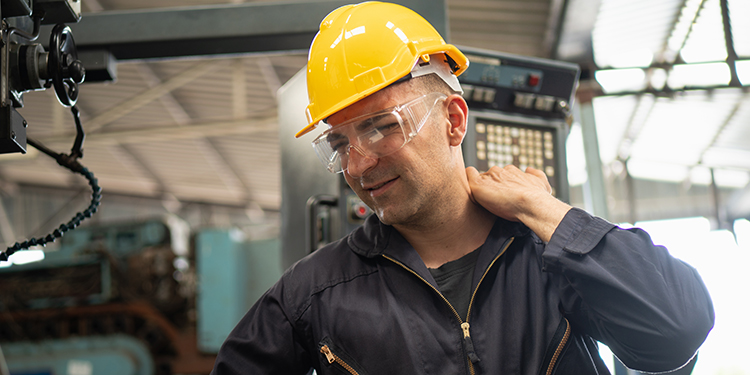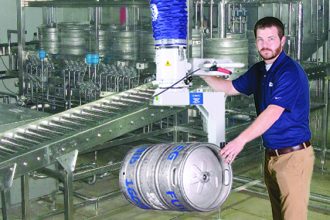Reducing The Risk Of Shoulder Injuries With Ergonomic Assist Equipment

This post is part of the EASE Educational Series: Ergonomic Solutions from Head to Toe
According to the Bureau of Labor Statistics’ most recent report on nonfatal injuries and illnesses that required days away from work in 2019, shoulder injuries accounted for 2,060 incidents among workers in general warehousing and storage, and another 1,920 incidents in refrigerated warehousing and storage employees. Multiple mechanical factors in manual material handling can contribute to these injuries. These include lifting, pushing, pulling, holding or carrying heavy items; performing work above shoulder height; repetitive movement; vibrations; and performing a task while in an awkward posture, as documented in a research paper published by The National Center for Biotechnology Information.
In addition to missing work due to a shoulder injury, the National Safety Council finds the average associated workers’ compensation costs to be $46,205. Fortunately, the risks — and costs — of an employee sustaining a shoulder injury can be mitigated with the implementation of certain ergonomic assist devices to help personnel perform tasks safely, at the optimal height, and with significantly reduced physical exertion. Many of these solutions allow the worker to perform the job in a natural manner by keeping the work at heights that do not require reaching above shoulder level. Additionally, some solutions may be programmed for the exact job being performed and thus modified as work processes change.
Automated Overhead Crane Systems: Frequently found in manufacturing and assembly operations, automated workstation cranes are programmed help workers lift, handle or move heavy objects ergonomically and with minimal effort. Capable of handling loads weighing up to 4,000 pounds, these overhead lifting and positioning systems are typically equipped with a device that attaches to the load, such as slings, grabs, spreader bars, custom end effectors, or magnets to allow one worker to precisely maneuver and place a load. This minimizes both fatigue and the risk of overexertion that could result in a shoulder injury.
Vacuum Lifts: Particularly ideal for fragile or irregularly shaped loads, ergonomic vacuum lifters reduce the need for complex positioning of traditional lifting devices. Instead, these devices feature one or more suction cups (also called grippers) connected to a unit that generates a vacuum that attaches securely to the product being lifted. The load is then raised or lowered with either a tube system or a chain or wire hoist. Venting the system releases the load quickly. By handling the weight of the load, the operator is able to maneuver it as needed without the risk of sustaining a shoulder injury due to repetitive motions, such as pulling, pushing, lifting, carrying, or reaching.
Intelligent Lifting Devices: Fully programmable to match the work being performed, intelligent lifting devices bridge the gap between traditional lift assist equipment and fully automated, robotic solutions. The device lifts and holds a heavy load securely, allowing it to be easily guided into position with little effort by the operator. Further, it supports repetitive-motion tasks —such as picking and placing — to reduce fatigue and minimize shoulder strain while boosting productivity and efficiency.
Looking for more ways to improve ergonomics in your manual material handling operation? Download the free publication, “Ergonomic Guidelines for Manual Material Handling,” published by the members of MHI’s Ergonomic Assist Systems & Equipment (EASE) Industry Group.



